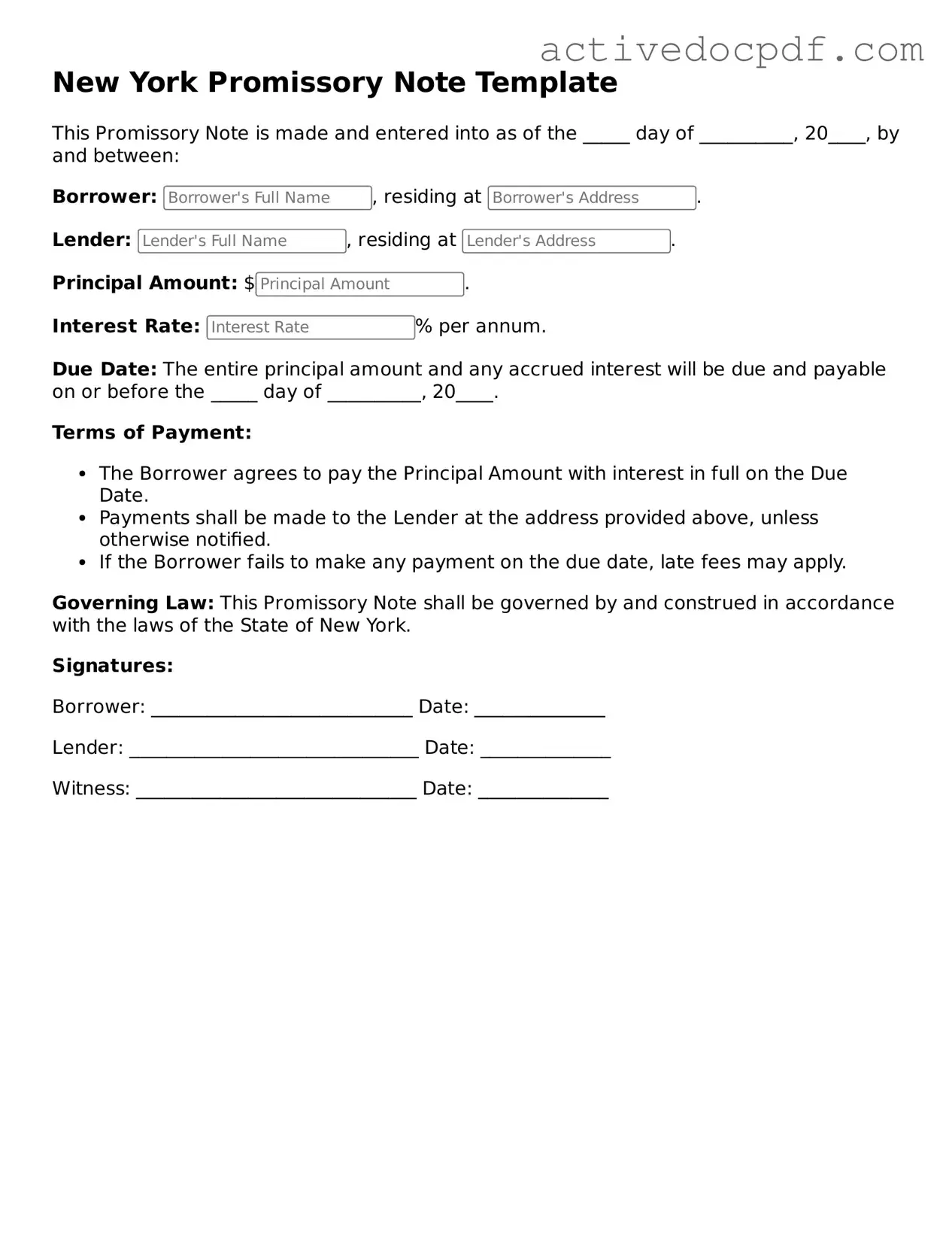What is a New York Promissory Note?
A New York Promissory Note is a legal document that outlines a borrower's promise to repay a specified amount of money to a lender under agreed-upon terms. This document serves as a written record of the loan and includes details such as the loan amount, interest rate, repayment schedule, and any penalties for late payment.
Who can use a Promissory Note?
Any individual or business can use a Promissory Note in New York. It is commonly utilized by:
-
Individuals borrowing money from friends or family.
-
Businesses seeking loans from investors or financial institutions.
-
Real estate transactions where buyers need to finance a portion of the purchase price.
A well-crafted Promissory Note should include the following key elements:
-
The names and addresses of both the borrower and the lender.
-
The principal amount being borrowed.
-
The interest rate, if applicable.
-
The repayment schedule, including due dates and payment amounts.
-
Any late fees or penalties for missed payments.
-
Signatures of both parties to validate the agreement.
Is a Promissory Note legally binding?
Yes, a Promissory Note is a legally binding document. Once signed by both parties, it creates an enforceable obligation for the borrower to repay the loan according to the terms outlined in the note. If the borrower fails to make payments, the lender has the right to take legal action to recover the owed amount.
Can a Promissory Note be modified?
Yes, a Promissory Note can be modified, but both parties must agree to the changes. It is advisable to document any modifications in writing, and both the borrower and lender should sign the revised note. This ensures clarity and protects both parties' interests.
What happens if the borrower defaults on the Promissory Note?
If the borrower defaults, meaning they fail to make payments as agreed, the lender may take several actions. These can include:
-
Contacting the borrower to discuss the missed payments.
-
Charging late fees as specified in the note.
-
Initiating legal proceedings to recover the owed amount.
It is important for both parties to communicate openly to resolve any issues before they escalate.
A New York Promissory Note form can be obtained from various sources, including:
-
Legal document preparation services.
-
Online legal form websites.
-
Local banks or credit unions that may provide templates.
Always ensure that the form complies with New York laws and is tailored to your specific needs.
